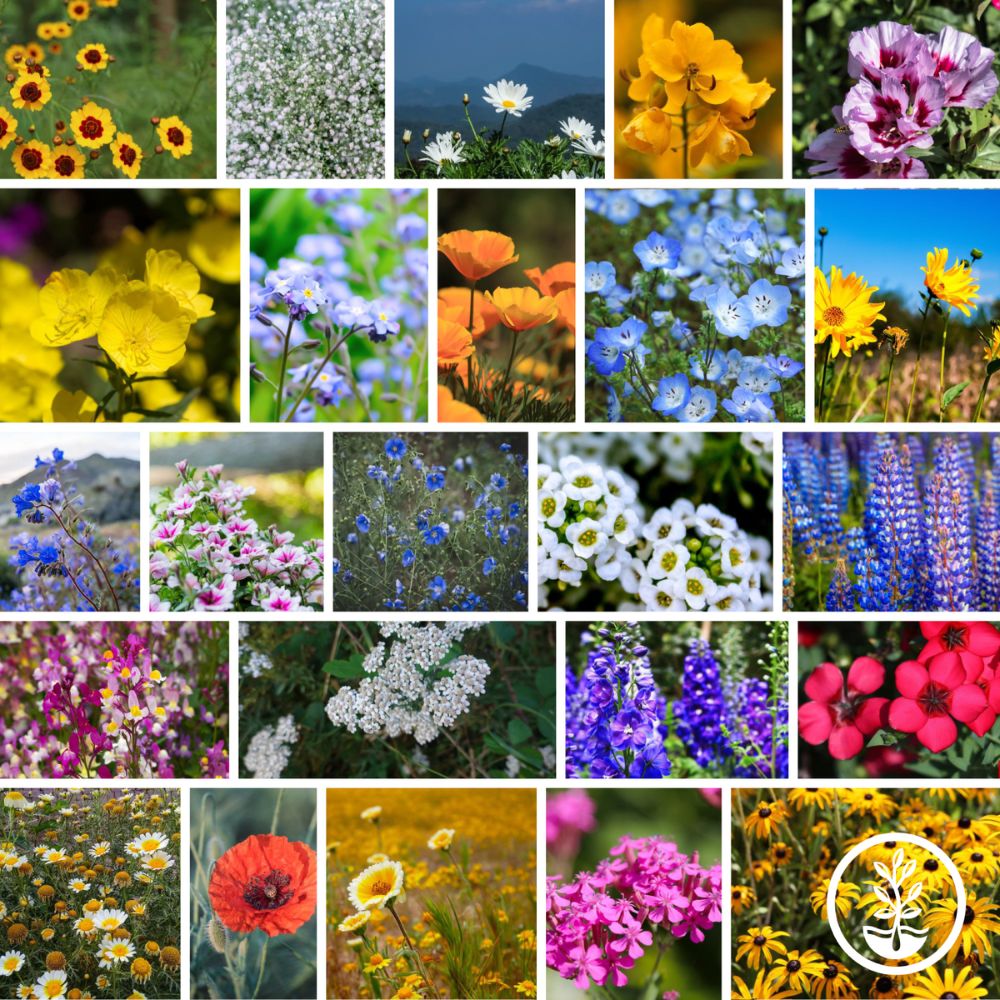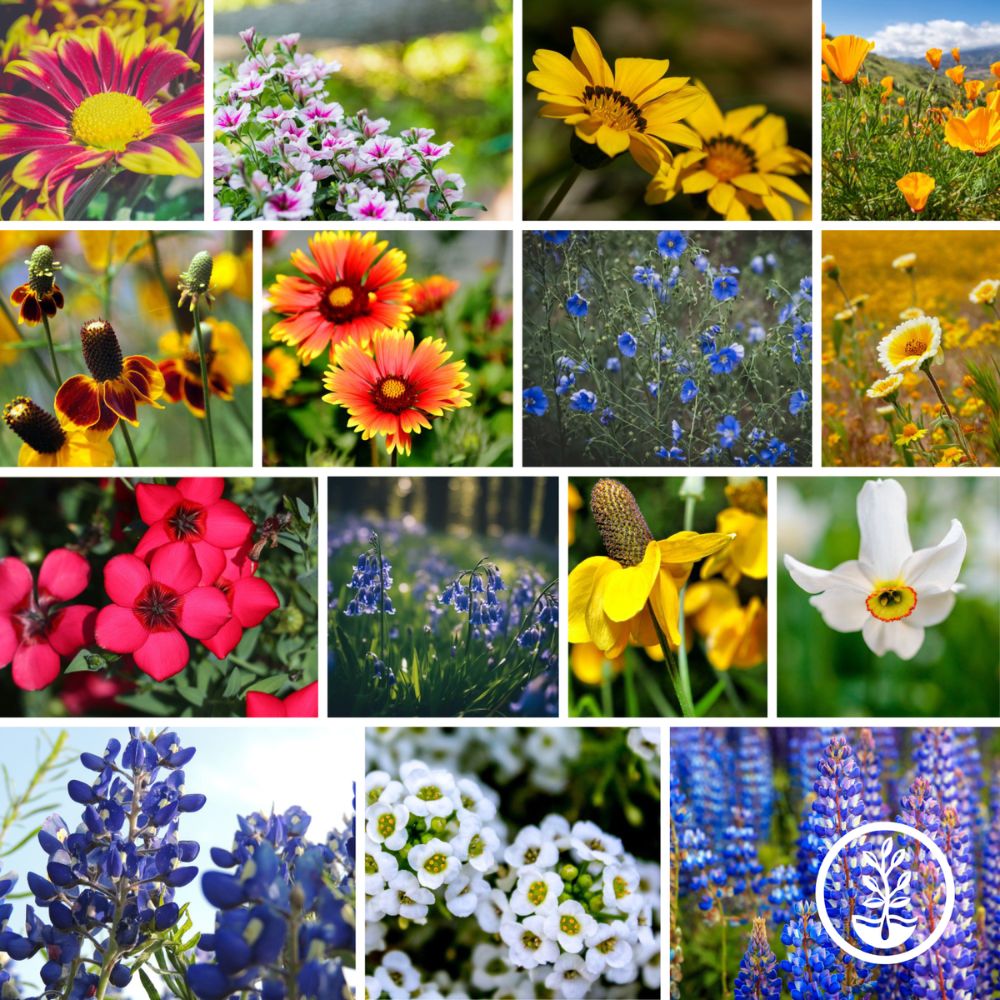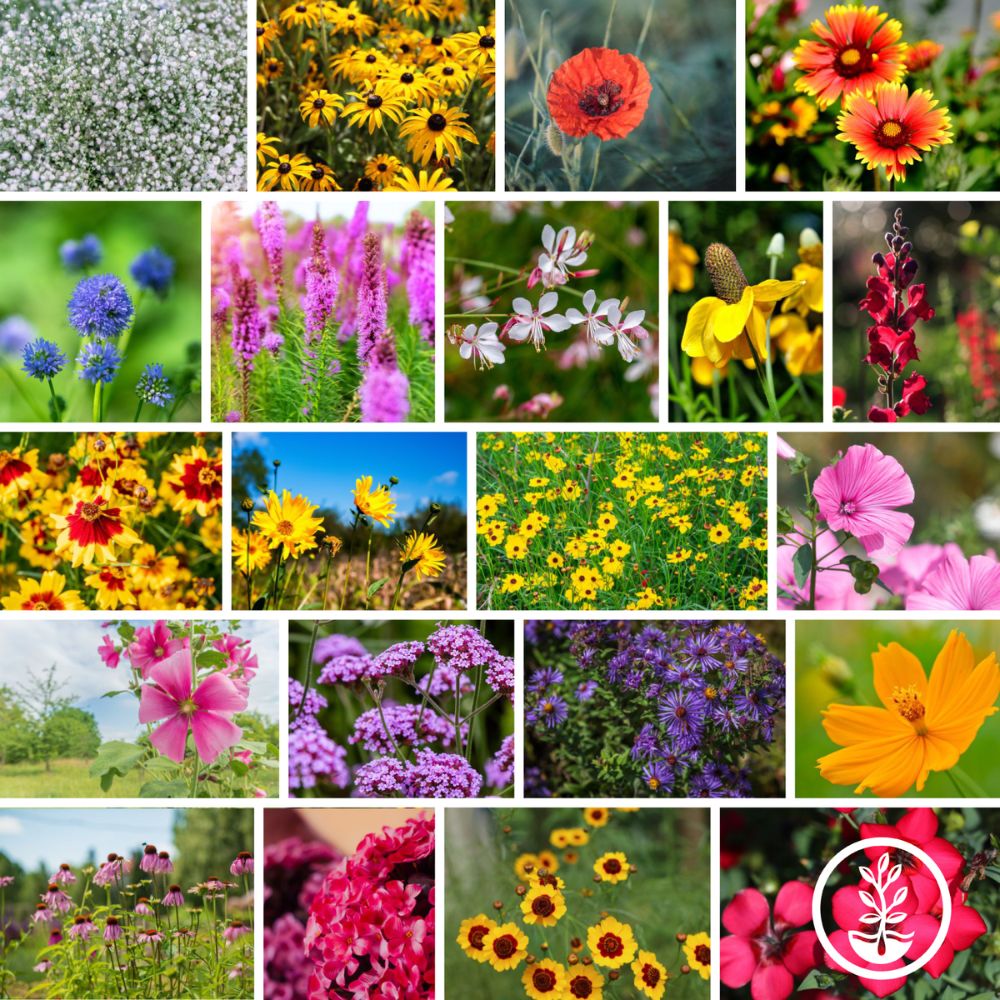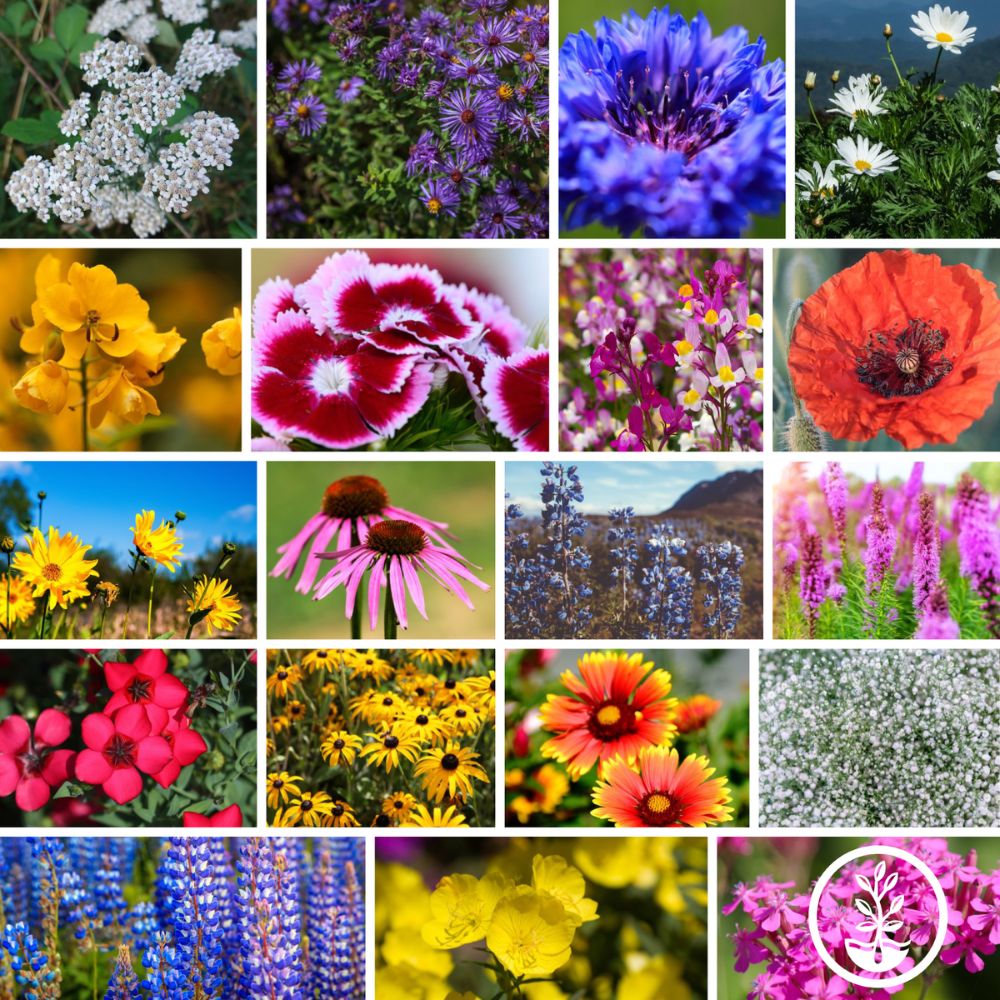 |
Written By Lara Wadsworth |
What goes through your head when you see a wildflower? Probably something about how beautiful and amazing it is, right? While wildflowers are impressive earthly adornments, their significance extends far beyond beauty. Flowers of all kinds are critical to our ecosystems across the globe. Each region has a specific set of needs which come as a result of the weather, altitude, terrain, and other factors. Regional wildflowers are specially designed by nature to endure the conditions of each place and add to the environmental value of a place as well.
Why Grow Regional Wildflowers?
Regional Wildflowers play a crucial role in supporting ecosystems and various creatures. They provide essential sustenance for pollinators, beneficial insects, birds, and small animals through their seeds, nectar, pollen, and leaves. Planting non-regionally adapted wildflowers can result in perpetuating invasive species, insect and bird decline, soil erosion, and a reduction in water quality.
Pollinators are four times more attracted to native wildflowers than they are non-natives! Additionally, regional wildflowers are more resource-efficient as they perform well with less water, fertilizer, and exhibit greater resilience to pests and diseases due to their established relationship with the local environment. The vast variations in climate and geography across the United States contain many different ecological climates, each requiring different qualities in perennial and annual wildflowers. Choosing the right mix of wildflowers is critical to their own survival and the ecosystem’s function.
Wildflowers for Western Regions
The Western United States is one of the most diverse regions in North America. From mountain tops in Utah to sunny seaside escapes in California, the plant life that varies there is vast. Luckily, True Leaf Market offers multiple mixes that are sure to meet the needs of each of the major climate zones throughout the West.
California Mix
This mix is specially curated with over a dozen different wildflowers known to flourish in the various climates across California. It includes a mix of annuals and perennials that ensure a stunning colorful display of pollinator-loving flowers for this year and next. However, if you live near the northern border of California, we recommend the Pacific Northwest Mix and if you live in the southern parts such as Eastern Los Angeles and near the borders of Arizona and Mexico, we recommend the Southwest Mix for your climate.
Pacific Northwest Mix
Do you live in Washington, Western Oregon, Northern California, or Western Idaho? The Pacific Northwest Mix is perfect for you! With this mix of annuals and perennials perfectly ready to thrive in the pacific Northwest climate, you will have easy to grow flowers providing bright colors all summer long. The pollinators love these species!
Rocky Mountain Mix
One of our most diverse mixes, this blend of twenty-two wildflower species is a foolproof way to encourage the most regional-specific blooms on your plant. Featuring larkspur, poppy, wallflower, gaillardia, catchfly, columbine, Forget-Me-Not, and many more, this group of plant friends will not disappoint. It's suitable for natural flower beds or open spaces and contains both hardy perennials and self-seeding annuals. Whether you have a small garden or a vast area to cover, this mix offers a touch of Rocky Mountain charm to your landscape. It will flourish in Utah, Wyoming, Montana, Colorado, Nevada, Idaho, and similar regions.
Midwest Regional Wildflower Mixes
From the vast and windy expanses of the Eastern Great Plains to the cold, humid days of the Western Great Lakes region, these mixes will provide color and resilience. This vast expanse, encompassing states like Iowa, Kansas, Nebraska, Minnesota, and Michigan, showcases a rich array of native wildflowers. The following mixes contain hardy and adaptable plants that have evolved to thrive in the Midwest's varying climate.
Texas and Oklahoma Mix
The vast majority of Texas and Oklahoma can confidently plant this mix and expect vibrant blooms throughout the spring, summer, and fall. With just seven grams of seeds, you can cover up to 50 square feet, making it an efficient and colorful way to enhance your landscape. Comprising a curated mix of annuals and perennials, these flowers are ready to grow in this climate! If you live in Western Texas, such as Laredo, Fort Bliss, or Western Lubbock, you may find greater success with the Southwest Mix.
Midwest Mix
Lying at the heart of the USA is the great Midwest. Including states such as Iowa, Kansas, Nebraska, Minnesota, and Michigan, this region tends to be humid, cool, and low altitude. With these places in mind, we curated an impressive array of 17 different flower species that put out over a dozen colors for you to enjoy throughout the summers. Its diversity ensures a stunning and enduring display, even in locations where other flowers might struggle.
Wildflowers for Southern Regions
If you live in a region with no winter or very mild winters, you can grow one of these mixes! The most significant difference is water. The southwest mix is going to have more drought-tolerant species and species that can handle cold nights and hot days. The southwest mix will have species that can handle excess humidity and water, where other plants might die or develop a disease such as powdery mildew. Both will provide stunning color and plentiful food for pollinators to thrive.
Southwest Mix
These American Southwest flowers thrive on hot, dry days and cold, clear nights. They often go dormant in the winter or during extended droughts, only to burst into colorful blooms when the first rains arrive. This mix is perfect for gardeners in Arizona, Southern California, Southern Utah, New Mexico, Southern Nevada, Oklahoma, and Western Texas. Low-maintenance and hardy, these flowers will thrive in the most challenging conditions.
Southeast Mix
The Southeast Mix Wildflower Seeds is a carefully crafted blend designed for the Southeastern United States, including Georgia, Alabama, the Carolinas, Florida, Louisiana, and Mississippi. This mix, featuring both annual and perennial wildflowers, is ideal for easy ornamental landscaping and encouraging pollinators.
Wildflowers for the Northeastern Region
The last major region in the USA the East. The Northeast spans 20 states and accommodates over 43 percent of the nation's population; this urbanized region still manages to nurture pockets of natural beauty. Help foster pollinators by planting some of the best wildflowers proven to thrive in the area.
Northeast Mix
The Northeast Mix is a delightful combination of 18 different wildflower species, such as White Yarrow, New England Aster, Cornflower, Shasta Daisy, and Black Eyed Susan. Whether you're in New England, the Mid-Atlantic, or the Eastern Great Lakes region, these seeds are well-suited for enhancing your garden or landscape.
How to Grow Wildflowers
Wildflowers are some of the easiest seeds to grow, offering massive payoff in beauty and functionality. Wildflower seeds can be sown in the early spring or late fall for spring germination. Many of these mixes designed for cold climates will benefit from some cold weather before they germinate in late spring. Try not to sow in the heat of summer or dead of winter.
Prepare the soil by removing debris and weeds, loosening the soil, and lightly watering. Then, scatter sow the seed mix. You can do this by hand or with a fertilizer spreader in larger areas. You can also mix the seeds with sand, other seeds, or another medium to help them spread out more evenly. Then, irrigate the area. It is generally recommended to keep the seeds moist until the seedlings have established for best results, but each mix is a bit different. Check out our full wildflower growing guide for sowing rates, tips, and more!
 |
Lara Wadsworth, True Leaf Market Writer |
I am a native of Southwestern Michigan, where I also reside, and I love all things plants! I got a Bachelor's Degree in Horticulture and found the first work-from-home job I could get. Now, I spend my days writing for TLM, playing with my dog, eating delicious food with my husband, and plotting my next landscape or gardening move. I believe everyone should get down and dirty in the soil now and then. Happy Gardening!


























6 comments
It appears that there is a California Poppy on the photo for the NorthEast Mix. Also, I didn’t think that Gallardia was native to Ohio
Not sure which of these would central Missouri would fall in? Maybe a zip code identifier for the wildflower packages?
Hello – I live in Alaska and I don’t see Alaska represented in the regions listed above. The Pacific Northwest may be the only option, but I don’t want to risk planting something that may become invasive. Thanks.
I live in southern Missouri 3miles from Grand Gulf State Park in MO and less than 10 miles from Mammoth Springs State Park in Arkansas. What wildflower mix would you recommend for the Arkansas and Missouri Ozark region in zone 7a? Our climate is very different from northern MO.
Greetings! I writing to you because I think there might be something you’re missing in your flower mixes, especially in this month of celebrating indigenous peoples. Psoralea Esculenta, aliases, Breadroot, Timpsila, Indian Turnips. Not only is this flowering plant beautiful, super hardy,
& edible. It historically has been as sustaining as the North American Bison to the indigenous peoples of the plains. Adaptable to a large area of our country. In some states it is now considered endangered. We are selling our cultivated seeds at indianturnipproducts.com, & would love to become a part of your seed packets. Let’s help proliferate this highly valued plant. It is being studied for many valuable elements nutritionally, including anticancer properties.